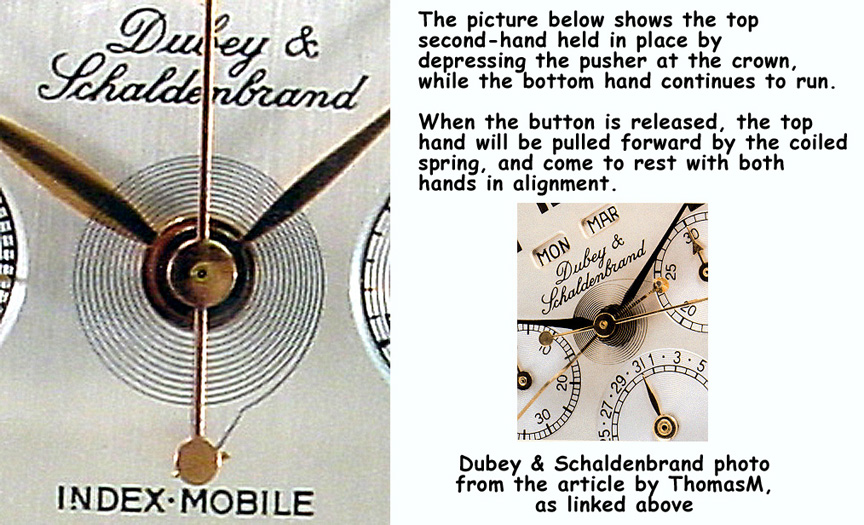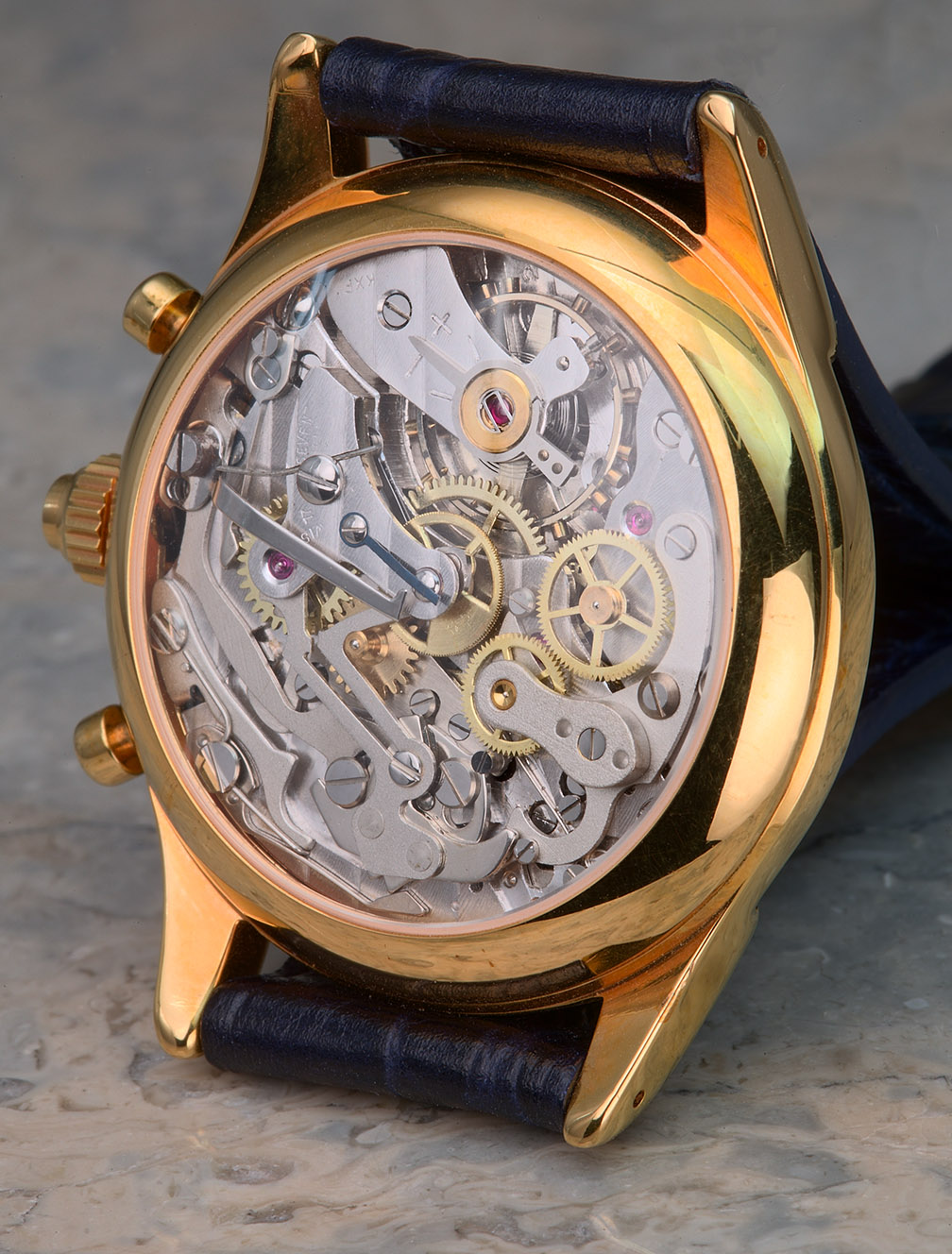The D & S Index Mobile was re-issued in the late 1990's incorporating new-old-stock movements into contemporary but period-style cases. The front and back crystals are sapphire, and while my watch is rose gold-plated, others were produced in stainless steel, and 18k gold, and in yellow as well as rose. Likewise, dial variations include gold-tone and black finishes along with the present silver. The hand-winding base movements are by Landeron, run at 18kbph, and approximate a spacious 31mm diameter. The watch measures 37.5mm diameter, and in a few the movement is decorated in contemporary D&S fashion. In my article on the Dubey & Schaldenbrand Carre Cambre Grande Date , I mentioned the current watch, and as it is almost certainly the most famous creaton of this firm, I will simply repost my brief comments here:
"Dubey & Schaldenbrand was created by master watchmaker George Dubey in 1946, and is probably best known for its uniquely simple and economical version of a split-second chronograph, called the Index Mobile. Instead of using a complicated mechanism under the dial, an extra shaft holding the "split" second-hand runs through the center of the watch, and is kept in place directly underneath the chronograph's main seconds-hand by a finely coiled spring. When a button in the center of the crown in depressed, the top hand stops while the lower continues to run, and can be held to time a secondary event for up to 58 seconds, returning instantly to meet the other hand as the button is released. This ingenious device is illustrated and reviewed most excellently at
ThomasM's article on the D&S Index Mobile .
Like so many other firms, the company suffered near extinction after the advent of quartz-controlled watches. In the 1990's, D&S was revived by one Cinette Robert, born into a watchmaking family and now the presumed first-lady of the Swiss watch industry. She has issued perhaps a few dozen watch designs in limited editions, primarily based upon the new-old-stock movements in inventory when she acquired the firm, and cased exclusively in historically attractive Art Deco styles. "
Another article, by Joel Pyson, containing information on the history of D&S and of this watch in particular has been translated from French and is available as an image of the text and pictures. Indeed, ThomasM's article, which I re-recommend here, far surpasses any independent knowledge I have of this watch, save a few observations from my own experience. I especially like the unique and very smooth action of the pushers and crown button. The button at 2 o'clock starts the chronograph, while the one at 4 o'clock stops and resets it, and both have a very soft but positive feel, especially compared with the controls on many contemporary mid-range chronographs. The action of the crown button is most pleasing, stopping and starting of the index hand instantaneously. I will not dispute ThomasM's assessment of these watches' gold-plating (he was not impressed), although I think the quality of the dial and printing is most acceptable, and the execution of the watch as a whole is in keeping with its relatively modest price. How this works out for the pieces which are more expensively cased is beyond my experience. This watch was one of my first purchases, and is still one of my favorite chronographs, allowing the pleasure of viewing the distinctive movement with its elegant and affordable execution of the usually highly-priced split-second function, while providing the genuine experience of a vintage watch, priced competitively with many much more mundane contemporary chronographs.



Please check out the rest of my Watch Articles and Pics
I hope you enjoyed this!
SteveG
November 9, 2001
All content Copyright asserted 2003